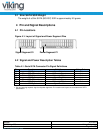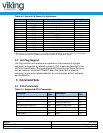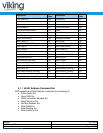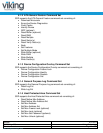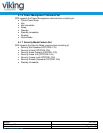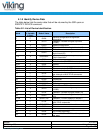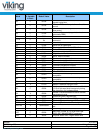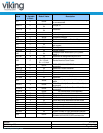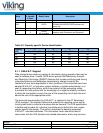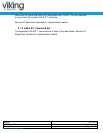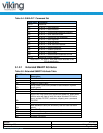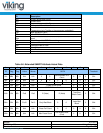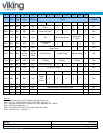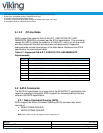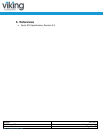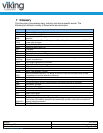
Manual
9/11/2014
PSFEM1xxxGQxxx
Viking Technology
Revision B
Page 26 of 33
www.vikingtechnology.com
Word
F: Fixed
V: Variable
X: Both
Default Value Description
mode 03h
235 00FFh
Maximum number of 512-byte data blocks per
DOWNLOAD MICROCODE command for
mode 03h
236-254 F 0h Reserved
255 X
XXA5h
XX is variable
Integrity word (Checksum and Signature)
Table 5-3: Capacity specific Device Identification
Capacity
(GB)
*1
*2
*3
*4
(Word 1/Word 54)
(Word 57-58)
(Word 60-61)
(Word 100-103)
64
tbd
tbd
tbd
tbd
128
tbd
tbd
tbd
tbd
256
tbd
tbd
tbd
tbd
512
tbd
tbd
tbd
tbd
1000
tbd
tbd
tbd
tbd
5.1.1 S.M.A.R.T. Support
Data storage drives capture a variety of information during operation that may be
used to analyze drive ―health. SATA drives provide Self-Monitoring, Analysis
and Reporting Technology (SMART) features that include monitoring and storing
critical performance and calibration parameters to attempt to predict the
likelihood of near-term degradation or fault conditions. Drive manufacturers have
adopted S.M.A.R.T. to help warn system software, a system administrator, or a
user of impending drive failure, while time remains to take preventive action.
It provides the host system with the knowledge of a negative reliability condition
to allow the host system to warn the user of the impending risk of data loss and
advise the user of the appropriate action.
The technical documentation for S.M.A.R.T. is captured in the AT Attachment
(ATA) standard. The standard defines the protocols for reporting errors and for
invoking self-tests to collect and analyze data on demand. The ATA specification
is flexible and provides for individual manufacturers to define their own unique
vendor specific information. This section describes the baseline supported
S.M.A.R.T. command attributes. The information herein should be used in
conjunction with the ATA standard and related documents, which may serve as



